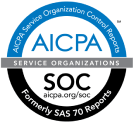By Healthesystems
In today’s evolving workers’ compensation landscape, the shift toward more personalized, outcomes-driven care is not just aspirational – it's essential. That’s because injured worker patients are not one-dimensional – they are nuanced, living, breathing beings with complex characteristics and needs. For Pharmacy Benefit Managers (PBMs), formulary design and management are powerful levers to drive toward more personalized care for these patients.
An effective formulary strategy is not a set-it-and-forget-it approach. Just as each injured worker is a three-dimensional being living in a dynamic environment, your formulary design should be agile, too. Nimbleness, in addition to configurability, is crucial to keeping up with changing regulations, emerging therapies, evolving prescribing behaviors and workers’ comp populations, and payer needs.
Many factors come into play to determine what medication and dosage is appropriate for each injured worker: those inherent to injury type or occupation, injured worker-specific factors such as age, safety factors, and more – and some of these factors continue to evolve over time. Evidence-based medicine, too, is always evolving, and your formularies should evolve right along with it to ensure alignment with the latest therapeutic guidance.
The beauty of strategic formulary design is that we can take all of the factors we mentioned into account and implement formularies that are personalized to meet the three-dimensional needs of every injured worker. By partnering with a PBM that offers this multi-layered capability, payers can ensure each injured worker receives the most appropriate and safe drug therapies – and provide better outcomes for all.
The Complexities of Formulary Management
It’s no secret that formulary management, at its very core, is complex. At the bare minimum, PBMs must account for state-specific formularies and changing regulations – and that’s before layering in injured worker-specific factors and unique therapeutic needs, many of which will vary depending on a payer’s covered population.
“PBMs must have deep regulatory and clinical expertise – as well as an intimate understanding of their customers – in order to design the most informed formularies for their clients,” explained Britten Featherston, Healthesystems Manager of Clinical Services.
Accommodating Unique Injured Worker Needs – and Emergent Situations
Each injured worker is defined by the intersection of multiple dimensions that include their occupation, the nature and phase of their injury, their age, comorbidities, and even the regulatory environment in which their claim exists. Specific patients and populations have specific medication needs and/or risks. For example:
- A healthcare worker may need antivirals or prophylactic medications following a needle-stick injury.
- A worker over the age of 65 may face increased risks from certain medications due to age-related pharmacodynamics.
- A patient recovering from surgery may need access to pain management therapies, such as opioids, that may not be appropriate for an injured worker in their chronic phase of injury.
“Patients and claims are multi-faceted, so a formulary strategy that has multiple layers is required to drive toward this model of more personalized care, and ultimately, optimal management,” said Featherston. “Ideally you want formularies that are highly configurable down to a granular level, and Healthesystems works closely with each customer to understand and customize these plans according to their needs.”
Healthesystems can work with clients to customize drug formularies in a variety of ways that encompass patient demographics, claim characteristics, cost, and drug safety concerns.
“Another example of why configurability is a key attribute of formulary management is the ability to quickly adjust formularies to accommodate impacted populations in emergent situations,” said Featherston. “For example, consider scenarios like the California wildfires or COVID-19. As the pandemic progressed, you suddenly had a population of healthcare workers who were at risk for contracting COVID – and who might need quick access to a medication like Paxlovid that was only authorized for emergency use at the time.”
Unburdening Claims Professionals
Customized formularies do much more than create better outcomes and a smoother, more personalized experience for injured workers. They also greatly benefit claims professionals, who are often bogged down with high caseloads. When a specific drug is included on a formulary, it doesn’t require a claims adjuster to review it and provide authorization. And when these formularies are fine-tuned, rather than broad strokes, this all adds up to reducing their workload.
“With a strategic formulary, we can achieve that balance of not burdening the adjuster with having to review everything but not letting anything slip through the cracks,” said Featherston. “At the same time, we can give claims professionals much-needed oversight and control, leading to better claims management.”
For instance, some drugs may be flagged for safety, regulatory, or cost concerns, and would need to be reviewed by an adjuster before they go to the injured worker. In these cases, Healthesystems facilitates alerts and guidance to the claims professional or pharmacy to aid in clinical decision making at the time of medication authorization.
Creating Better Outcomes for Payers
By partnering with a PBM like Healthesystems, workers’ compensation payers can use strategic formulary design to their advantage. They can keep track of emerging pharmacy cost drivers that arise within niche areas of workers’ compensation and maintain formularies that allow for easy access to clinically appropriate and cost-effective medications – while avoiding high-cost medications that offer no greater benefits.
“Formularies are an integral part of our clinical program at Healthesystems, and our customized formulary management services promote clinical appropriateness and cost-effective prescribing,” said Featherston. “Ensuring the injured worker gets the right drugs at the right cost is a win-win for both the patient and the payer. By personalizing medication access to the unique needs of individual injured workers, we can improve outcomes, reduce friction, and deliver value across the workers’ comp ecosystem.”
Related Content
For more information on strategic formulary design and how it relates to evolving regulations and presumption laws, read the RxInformer magazine article, Burden of Proof: Unpacking Presumptions in Workers’ Comp.
This article originally appeared on WorkCompWire.






